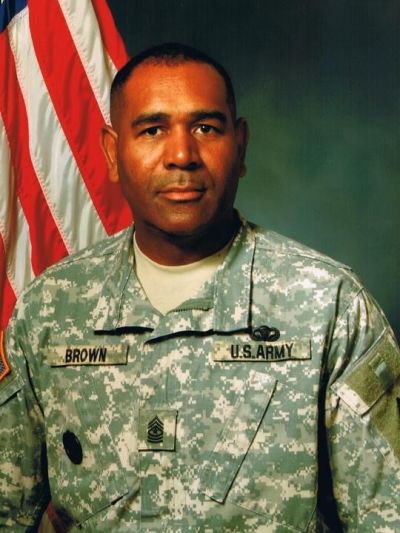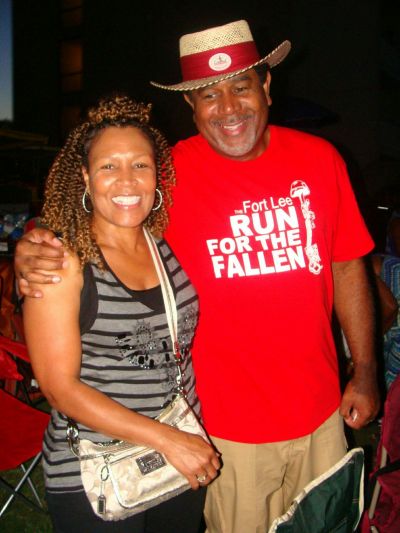SPRINT PNS; Low Back Pain

About 30 years ago, when Scott was an Army drill sergeant, he was leading his soldiers to the rifle range when he heard a truck coming down the hill honking its horn. Thinking quickly, he cleared the soldiers from the road. However, as he made it back to the front of the line, he saw that the truck, whose brakes were failing, was headed toward him. He jumped out of the way, tumbling down the side of the hill, and landed hard against a tree stump.
“I had all of my weight, plus my gear, which was a 35- or 45-pound rucksack, and I hit that tree full-force,” says Scott. “I got pretty bent up, and my back and hip hurt, but of course, being the kind of person I am, I got up and continued on.”
Scott was also an “airborne soldier” who jumped out of airplanes. He says the compression that went up his legs and back as he landed — as well as running up to five miles a day — compounded the issue with his back. And as he grew older, the pain became constant.
Seeking help
Over the years he saw primary doctors who prescribed physical therapy or medications, but they didn’t really help. In fact, Scott avoided pain killers because he was concerned about developing a dependency on them. However, he says he took a lot of Motrin, which caused stomach issues.
Scott says sitting in a car was one of the worst things for his back. “My wife Tanya and I would drive from Virginia back home to Ohio, which can be up to an eight-hour drive. But with the pain, it took us much longer because we’d have to keep stopping so I could get out of the car and stretch to loosen up my back.”
Walking was also an issue. As with driving, Scott says his back would get tight and tired, so he had to limit his movement and do a lot of stretching along the way.

A revealing MRI
Eventually, Scott started seeing a new doctor at the VA who told him he needed to have an MRI because he could tell something was wrong and wanted to see what was going on. It turned out that Scott had three compressed discs.
After this discovery, the doctor referred him to the VA’s pain clinic, where Scott met with a pain specialist. The specialist went over his options, which ranged from spinal fusion surgery to continuing physical therapy, none of which sounded good to Scott. Near the end of his appointment, though, Scott says a resident doctor asked if he had heard of a 60-day treatment called SPRINT® PNS and handed him a pamphlet on it. Scott was intrigued, and because his wife is a registered nurse, he called her to get her opinion. She said, “let’s try it”!
After that conversation, Scott recalls that the doctor walked in, and Scott asked her when was the earliest they could do the procedure. “If I’m not mistaken, she told me they could do it in two days, and I said, ‘schedule me.’ It turns out, that was one of the best decisions I have ever made.”
Getting back out there
Scott is happy to report that the SPRINT PNS treatment brought down his pain levels significantly. “I went from an eight or nine out of ten on my level of pain on a daily basis down to a two or a three. It got to the point where I was no longer thinking about the pain anymore. It also allowed me to get back out there and walk with my wife again.”
Aside from walking with his wife of forty years, perhaps the biggest joy the pain relief has brought Scott is his ability to freely do activities with his precious six-year-old granddaughter. “Her favorite words are, ‘I want to play,’ and believe me, she wears me out, but it’s so fun. It keeps me young,” he says with a big smile.
The SPRINT PNS System is indicated for up to 60 days for: (i) Symptomatic relief of chronic, intractable pain, post-surgical and post-traumatic acute pain; (ii) Symptomatic relief of post-traumatic pain; and (iii) Symptomatic relief of post-operative pain. The SPRINT PNS System is not intended to be placed in the region innervated by the cranial and facial nerves.
Each patient’s testimonial is the result of each patient’s unique situation resulting in varying responses, experiences, risks, and outcomes to the SPRINT PNS System. The patient experiences shared on this page are not medical advice and should not be substituted for the independent medical judgment of a trained healthcare professional. Discuss your options and use of the SPRINT PNS System with your medical provider. Physicians should use their best judgment when deciding when to use the SPRINT PNS System. For more information see the SPRINT PNS System IFU.
Most common side effects are skin irritation and erythema. Results may vary. Rx only.

